Intersubjective Artistic Matrix
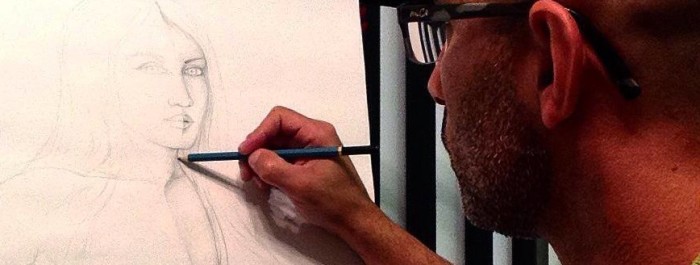
For a while now I’ve been thinking about writing on a subject that for many artists may result in defensive argumentation, as I’ve seen in the past during some conversations and online discussions. However, it is a subject that deserves attention not to establish a definite interpretation of benefits or causes for rejection, but to understand the teaching and therapeutic benefits of engaging in this practice. In past posts, I explored the subject (read: How to Explain Your Art). During the summer I began reading the book Art Therapy and the Neuroscience of Relationships, Creativity, and Resiliency: Skills and Practices by Noah Hass-Cohen and Joanna Clyde Findlay, and they introduced to me the term “Intersubjective Artistic Matrix” (IAM). IAM defines the artist’s capacity to retain and explain the procedures utilized during the creation of a piece of art as if connecting subconscious and conscious processes.
In cognitive theory, knowledge is expressed in procedural fluency and conceptual understanding. How do we differentiate these two? There are many things we do without giving much thought. Certain procedures, with practice and repetition, become something like second nature to us. We know how to do it, so we just do it. At times, we find ourselves trying to explain what we are doing and fall short in putting into words all the elements and mental processes we often not pay attention to. Here is where conceptual understanding comes in. Conceptual understanding aligns connections and relationships between bits of information to create an explanation. Think of these two as practice and theory. There seems to be a debate about which of the two has more “knowledge value”. What if both are equally valuable? What if the context in which they are needed determines their value? What if both together are more valuable than each one of them separately? These are questions to be considered before rejecting one or the other. The more perspectives
We can expend time analyzing contexts where procedural fluency is required more than conceptual understanding, and the also the other way around. We might find contexts in which both are equally necessary. Nevertheless, the intention of looking at IAM is to seek understanding of when and how it becomes beneficial in the context of teaching and therapy. As an educator, and in my experience in the sculpting and painting parties, as well as in the classroom and private lessons, I find extremely important to have both. It could be counterproductive in a learning setting to do something for others to learn and not being able to explain the mental processes, and the procedures that interact in doing so. The opposite is also true. It is difficult to gain trust from the people we are trying to teach if we can explain all the nuances of a procedure but being incapable of doing it. Yes, there are some exceptions where it might not be necessary to prove we can do it, or situations in which we don’t have to explain what we are doing. Again, it all depends on the situation.
In therapy, and more specifically art therapy (I am not an art therapist although I had experience similar approaches within my classes) the benefits of this IAM is for the individual using art as a form of therapy. We can always try to interpret someone’s work based on our own understanding, knowledge, and biases. However, what if we could uncover the emotions and experiences from which the creation finds its inspiration and significance right from the source? What if the individual could find a way to open up to hidden emotions and experiences once expressed visually, through music, through writing, or other forms of art? Some might argue that art can speak by itself, but I can testify of how many interpretations of my art coming from other people have nothing to do with what I was thinking or feeling at the time of creation. Maybe we could give ourselves a chance to discover ourselves in our art, and allow others to do the same. Maybe someone else can find emotional and intellectual benefit in connecting process and concept if they are granted the chance to do so.



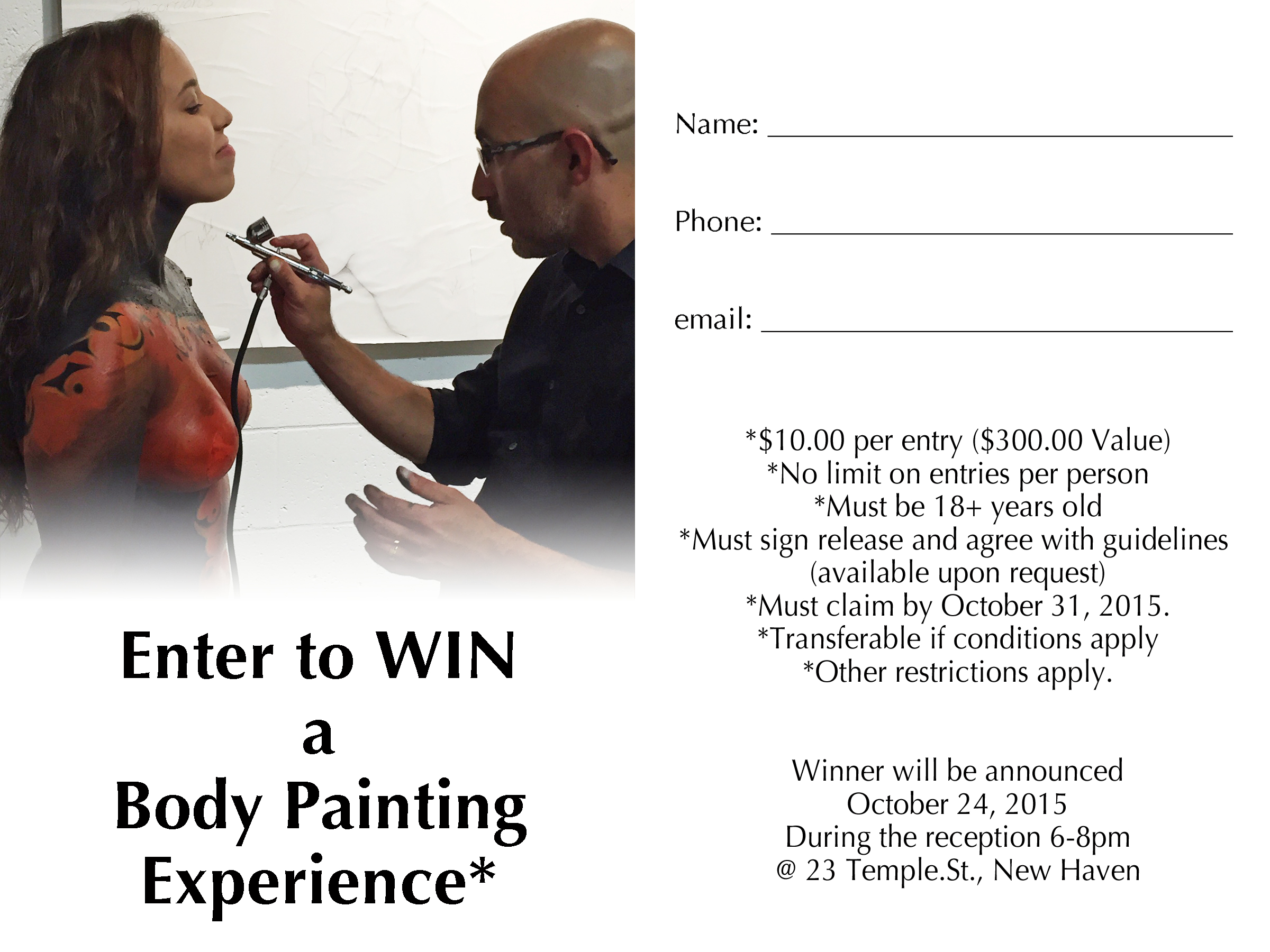
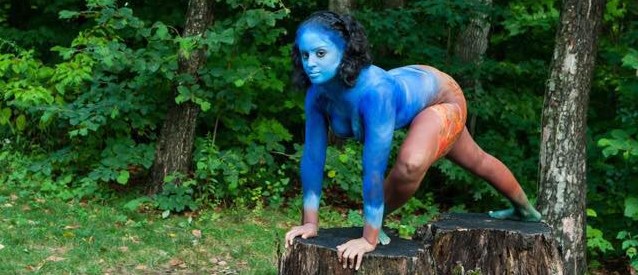
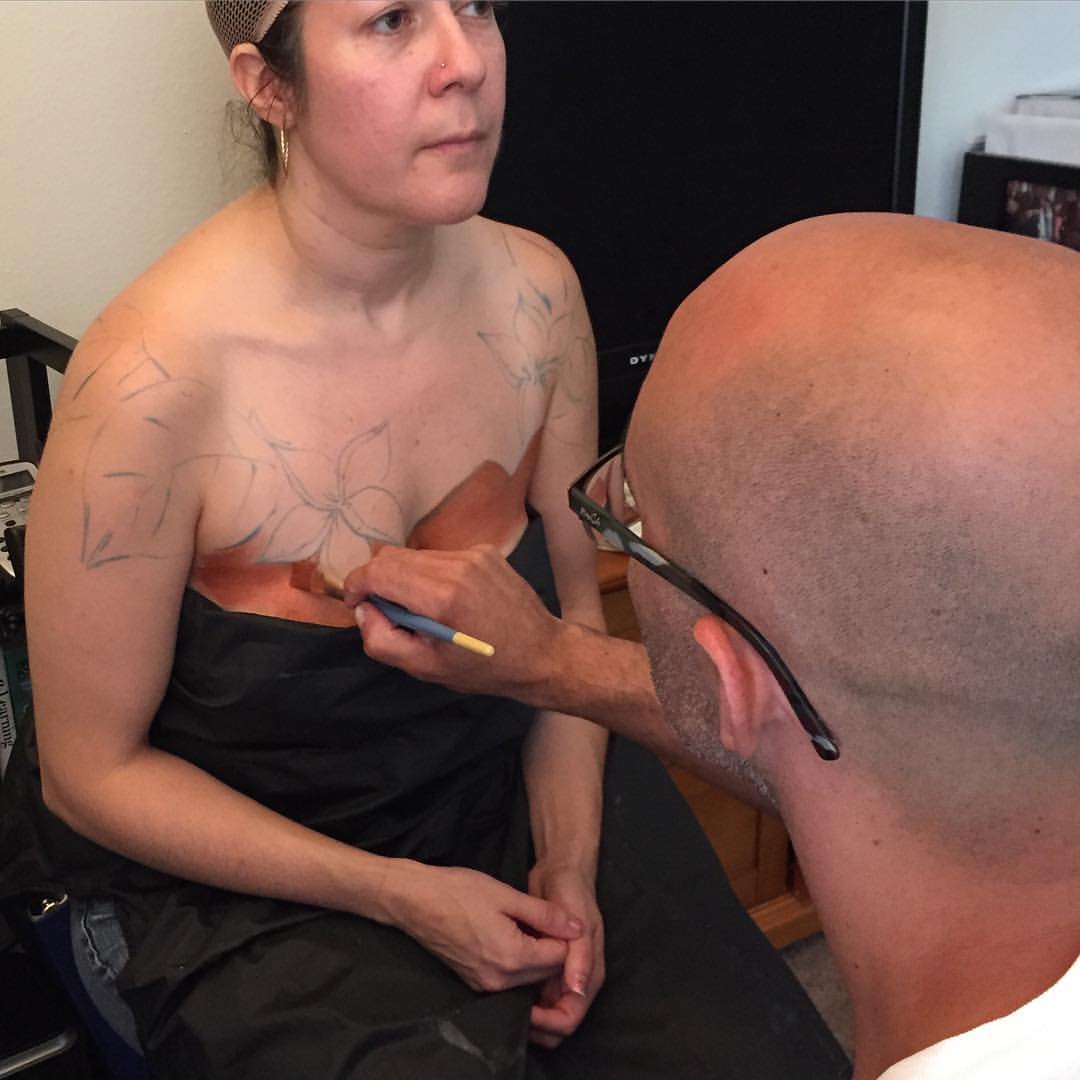 Body painting allows a person to see something about them that is often hidden deep inside. I try to design and paint on a person something that I see in their personality or character. “More than meets the eye” is often said but how often we allow to dig deeper inside ourselves to see what others see in us? It is easy to look inside someone else and see what we don’t see. By painting on someone, I aim to allow them to see what I see about them so they can see it too. It is art even when I paint a generic design on someone, but it becomes therapy when the vision of the artist is linked to the person being painted.
Body painting allows a person to see something about them that is often hidden deep inside. I try to design and paint on a person something that I see in their personality or character. “More than meets the eye” is often said but how often we allow to dig deeper inside ourselves to see what others see in us? It is easy to look inside someone else and see what we don’t see. By painting on someone, I aim to allow them to see what I see about them so they can see it too. It is art even when I paint a generic design on someone, but it becomes therapy when the vision of the artist is linked to the person being painted. As you may know by now, I don’t just do things for the sake of art or entertainment. I am looking for something else of deep value in everything I do. I am looking for some way to impact the lives of those who encounter my art in some way. The Art of Iván Tirado LLC is much more than just traditional painting and sculpting. Paintings and sculptures are dead if they have no connection to people. The value of speaking and teaching about these things abides in what people can use to make even a slight difference in their lives. It is no different with body painting.
As you may know by now, I don’t just do things for the sake of art or entertainment. I am looking for something else of deep value in everything I do. I am looking for some way to impact the lives of those who encounter my art in some way. The Art of Iván Tirado LLC is much more than just traditional painting and sculpting. Paintings and sculptures are dead if they have no connection to people. The value of speaking and teaching about these things abides in what people can use to make even a slight difference in their lives. It is no different with body painting.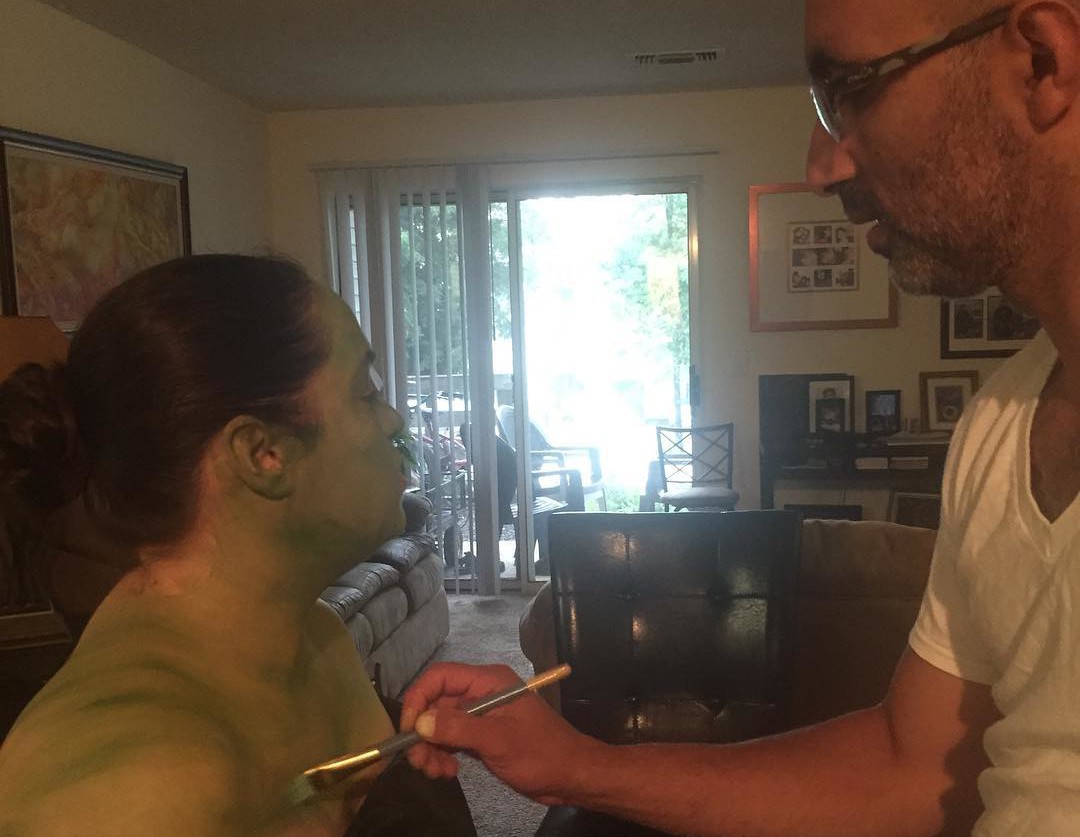 What if I could see in a person what he or she stopped seeing about himself or herself? What if that vision serves a purpose of healing? What if transforming a person in what is not seen with the naked eye allows to grow and boost self-confidence and a new appreciation of the self? What if body painting is used to help people as a form of therapy?
What if I could see in a person what he or she stopped seeing about himself or herself? What if that vision serves a purpose of healing? What if transforming a person in what is not seen with the naked eye allows to grow and boost self-confidence and a new appreciation of the self? What if body painting is used to help people as a form of therapy?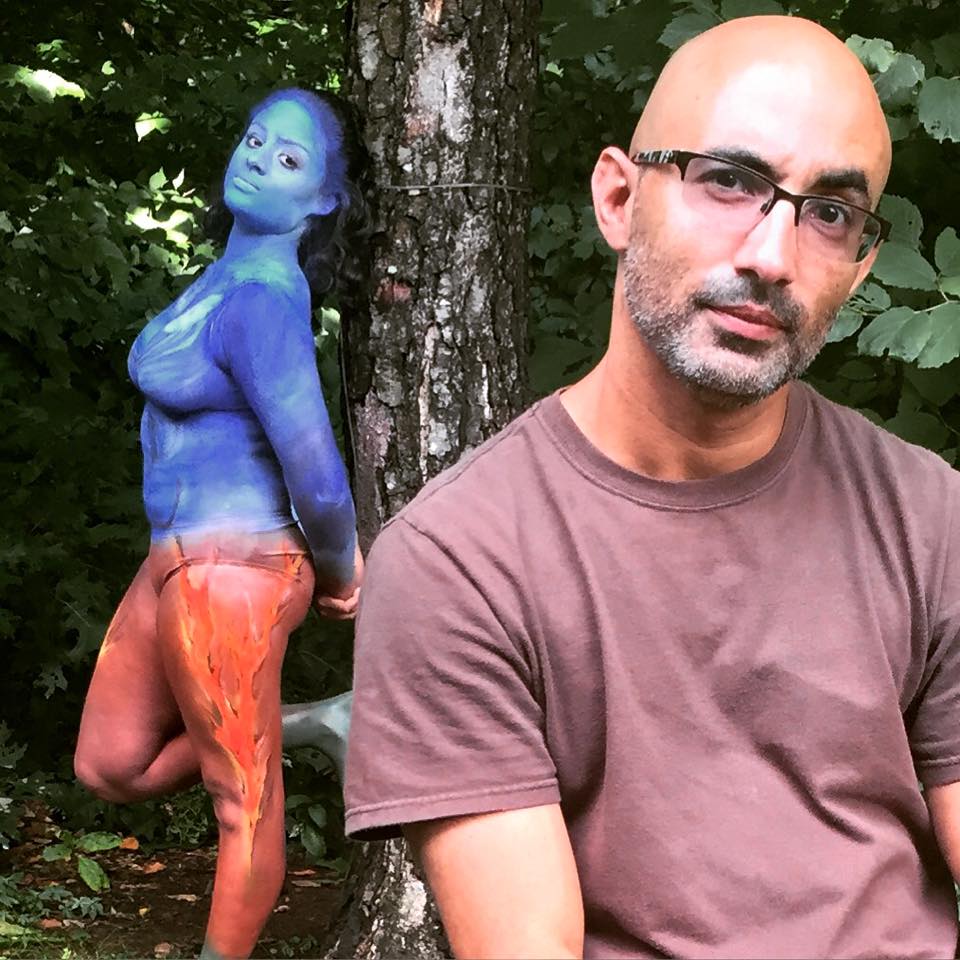 When Michael Jordan decided to play baseball in 1993 a lot of people criticized the fact that he was not as good as baseball as he was at basketball. He is a professional basketball player after all and many will argue that he is the best player of all times. That didn’t come easy and he practiced a lot. It is very unfair to think that he would be as good in baseball in a very short period of time. Yesterday I had the opportunity to work on my first full body painting. It was an amazing experience and I had so much fun. It was a lot of work. Five hours painting left me exhausted, but it was worth it. The model was excellent and so patient. I kept repeating to the point of being annoying, “It was not too bad for the first one”.
When Michael Jordan decided to play baseball in 1993 a lot of people criticized the fact that he was not as good as baseball as he was at basketball. He is a professional basketball player after all and many will argue that he is the best player of all times. That didn’t come easy and he practiced a lot. It is very unfair to think that he would be as good in baseball in a very short period of time. Yesterday I had the opportunity to work on my first full body painting. It was an amazing experience and I had so much fun. It was a lot of work. Five hours painting left me exhausted, but it was worth it. The model was excellent and so patient. I kept repeating to the point of being annoying, “It was not too bad for the first one”.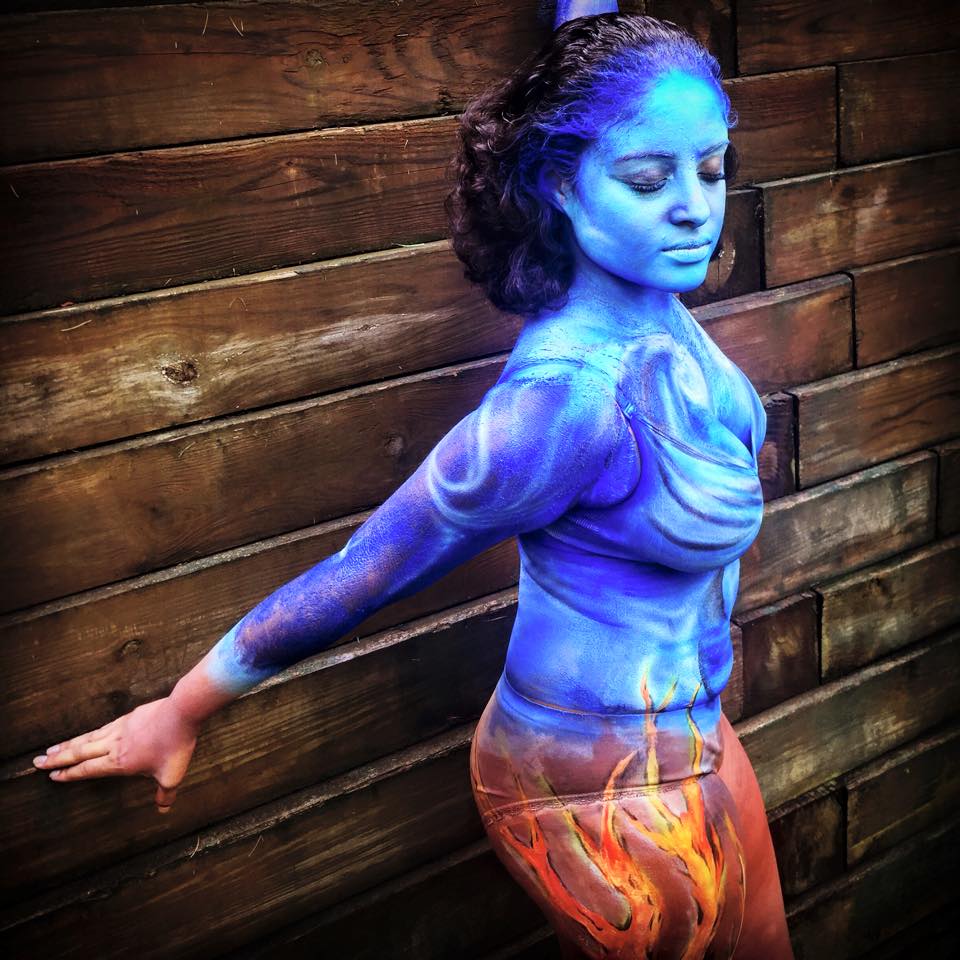 I am aware that I can’t become an expert or even as good as professional body painters on my first try just because I sculpt and paint. It would be ridiculous to think otherwise. It is like expecting Jordan to be excellent as baseball because he played basketball. However, there is always criticism and I must confess that most of it comes from myself. Interestingly, a lot of people liked the result. I liked it too. I liked it a lot. On the other hand, and if you know me and my brain, you know I was taking every minute of it to learn and figure out the strategies I’m using in the next body paintings. It should be better next time. I can still dedicate more time in details by avoiding mistakes and things that didn’t work as expected this time around.
I am aware that I can’t become an expert or even as good as professional body painters on my first try just because I sculpt and paint. It would be ridiculous to think otherwise. It is like expecting Jordan to be excellent as baseball because he played basketball. However, there is always criticism and I must confess that most of it comes from myself. Interestingly, a lot of people liked the result. I liked it too. I liked it a lot. On the other hand, and if you know me and my brain, you know I was taking every minute of it to learn and figure out the strategies I’m using in the next body paintings. It should be better next time. I can still dedicate more time in details by avoiding mistakes and things that didn’t work as expected this time around. There will be more. I have a few already scheduled leading to demos in September and October. I need the practice. I believe it is possible to learn each time something new. It is with everything we do and try. There is so much to learn and to try. Experimentation is always fun because it leads to discovery. It is important to learn from others but we need to try to figure things on our own and find the techniques and methods that are better for us. That’s what learning is, making meaning of knowledge between our own cognition and outside information. I am looking forward to the next experience.
There will be more. I have a few already scheduled leading to demos in September and October. I need the practice. I believe it is possible to learn each time something new. It is with everything we do and try. There is so much to learn and to try. Experimentation is always fun because it leads to discovery. It is important to learn from others but we need to try to figure things on our own and find the techniques and methods that are better for us. That’s what learning is, making meaning of knowledge between our own cognition and outside information. I am looking forward to the next experience.
The Science in the Art
It has been a while since last time I wrote in my blog. It has been a great journey so far this semester teaching Inquiry at Quinnipiac University, the academic advising experiment, the sculpting and painting parties, the workshops and talks on Business Needs Assessment with an Inquiry Approach, the show that just ended at Spectrum Gallery, the sculpting demo I had there back in March, the sculpting workshop at Columbus School through ARTE Inc., the computer classes at the now Literacy Volunteers of Southern Connecticut, and a new partnership unfolding that gets me closer to understand my mission and the reason I do what I do… Well, that was a long sentence… Things are wrapping up as we are about a month away to finish the semester. The summer (if we get one this year in New England) is already promising good things. I think that brings us up-to-date in everything that is happening.
The Science in the Art
My students were working in groups to get feedback from each other as they prepared for their oral presentations. This is one way research in peer tutoring learning environments supports practice and practice supports research. In the process, one student was trying to find a connection between health sciences, specifically medicine, and art. To serve as an example that helped make the connection clear and concrete we have the Frank H. Netter M.D. School of Medicine at Quinnipiac University. Frank H. Netter M.D. was a surgeon and world’s most prolific medical illustrator. He helped medicine understand the human body with his illustrations. Interestingly, when people study medicine they call it medical arts. Not finding the connection yet? Let me help you understand. All the knowledge in science, or in any field, is incomplete without the capacity to think creatively to solve specific issues or to accurately come up with a diagnosis.